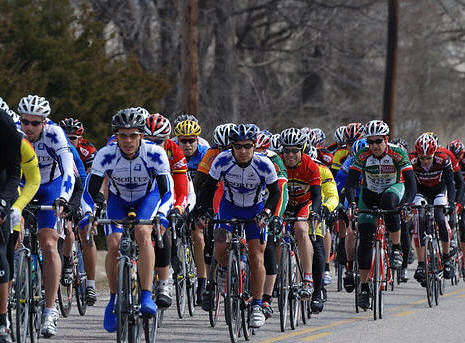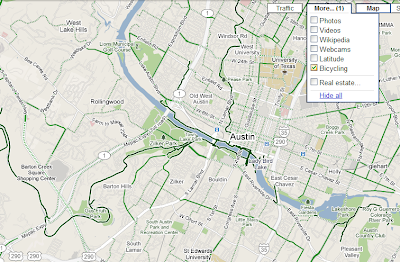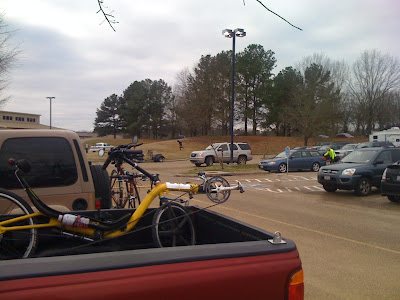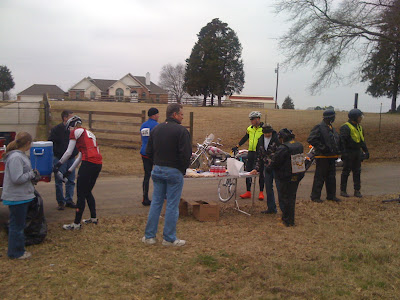
We caught up with local biking celebrity ‘Bikin Mike’, who is the founder and ‘brains’ behind the ‘Tour Dallas’ event. It’s important to note that it’s ‘Tour Dallas’ which is something you DO and not ‘Tour of Dallas’ a thing or an event.
He was gracious enough, to let us bounce off a few questions of him:
How did the ‘Tour’ come into existence and what goal are your trying to accomplish?
I felt like there were no bike rides for the casual cyclist. 80% of all bikes sold come out of big box retailers and most of those cyclists do not know anything about the “cycling community”. Tour Dallas was designed to be fun, easy to get to, easy to participate in with shorter routes and a family friendly atmosphere.
I gathered that there is a misconception about “Tour Dallas” with some of the riding community?
The local cycling community wants me to let them go as fast as they want and as far as they want. In order to maintain the safety and fun/casual ride atmosphere, we will always discourage speed. We will also retain the route distances so that we will not scare off the casual cyclist. We think with this model we can grow the event until it is larger than the White Rock Marathon
Could you please explain the difference between a regular bike ride/race in north Texas and the “Tour Dallas”?
Tour Dallas is not a race. It was not designed to be a rural ride with long routes. We also discourage speed in our literature and along our routes.
The Tour primarily has shorter distances, would you mind sharing your thoughts behind that?
We are trying to attract the casual cyclist. Our experience has taught us that we attract more first time event participants at Tour Dallas than any other area event.
Who benefits from the ‘Tour’?
Tour Dallas is first and foremost a bike ride for the community. Our participants benefit more than anyone else. As the producer of the event, I make a donation to a local or national charity from the proceeds of Tour Dallas. I was taught to give back the first 10% of what I earn to my “community”, so we model that behavior in our business efforts. Last year we gave away 30% of the net income.
What motivated you personally, to start the ‘Tour’?
I think that we would all be healthier if we were more active. As a result, I elected to encourage more people to ride bikes. I began doing that in 1974 and I hope to continue for many more years.
Which was the most rewarding experience hosting the ‘Tour Dallas’?
We have great things happen every year. Watching the kids finish, watching the families who are riding together, hearing the stories like Brenda Barnell. While she was riding a hybrid at
White Rock Lake, she was encouraged to ride Tour Dallas. It was her first organized ride. Through the exposure to other events, she became a rather avid cyclist. Within 3 years, she was
participating in the Race Across America on part of a co-ed team. She has done that twice and is a very active cyclist.
Logistically, can you give a participant an idea of all the planning, labor, finances and energy it takes to put on an event such as this?
I work on Tour Dallas for 12 months and put in over 500 hours in administrative planning and operations. Additionally, we have a leadership team of 12 volunteers who serve in a variety of management/operations duties and some 200 volunteers. We hire 220 DPD Officers at a cost of $45,000 and spend roughly $125,000 to produce the event. We never know until the day of the ride if we are going to lose money, break even or make a profit.
Seriously, how many port-a-potties do you have?
40 at the Start Site and 20 at each break point for a total of 80 units.
Personally, how did you end up becoming a cyclist?
As a 19 year old student at Richland College in 1974 I watched the film “Run For Your Life” by Dr. Ken Cooper. Running did not appeal to me, but the idea of riding a bike for aerobic exercise appealed to me. I went to a garage sale, bought a Schwinn Varsity for $25 and have been cycling ever since.
What do you take on a ride with you no matter what (besides the bike of course)?
Music. It is either in my head, on my ipod or blasting from the trailer I pull at area rides.
What’s your favorite ride in North Texas that you just HAVE to do?
HHH in Wichita Falls.
Ever got pulled over by a cop for running a stop sign around White Rock Lake?
Sorry to admit it, but I have never had that happen. I stop at stop signs. Still, in the early 90’s, while participating in a group ride on a tandem with my wife, we were stopping at an intersection when the motorist to our right (nobody else was there) motioned for us to go on. We did. A Plano PD Officer who was behind us stopped our group and wrote tickets to all of us. His reason? That the motorist did not have the right to wave us through the stop sign. To this day, as a result, if a motorist is waving me through, I stop anyway.
Anything that you REALLY would love to pass on to everyone reading this?
Riding a bike for fun and fitness is easier than you think. Just remember these simple rules “Less load — more leg speed”. Riding a bike to lose weight? Slow down and quit eating so much on the ride. Riding a bike to go fast? Get a USA Cycling License and start entering real races.

..
DS
 If you are listening to sports radio in North Texas, you know Junior Miller from the little Ticket. We’ve been listening to him and George since 1995 and as most P1’s know, he is an avid runner and cyclist.
If you are listening to sports radio in North Texas, you know Junior Miller from the little Ticket. We’ve been listening to him and George since 1995 and as most P1’s know, he is an avid runner and cyclist. Just how fast can a Texan pedal a bike?
Just how fast can a Texan pedal a bike? Lance Armstrong
Lance Armstrong






